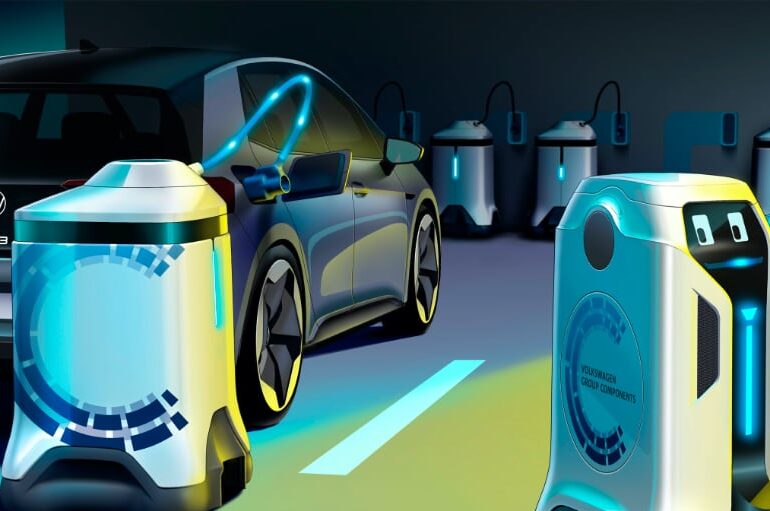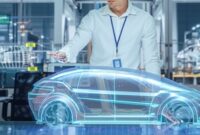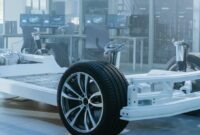The Electrification Revolution: More Than Just a Battery
Paradigm Shift in the Automotive Industry
The automotive industry is undergoing an unprecedented transformation. The era of fossil fuel vehicles is slowly starting to be replaced by the dominance of electric vehicles (EVs). In the United States, the push towards electrification is getting stronger, driven by factors such as climate change awareness, advances in battery technology, and government policy support. However, this electrification revolution is not just about changing energy sources from gasoline to electricity. There are many other aspects that need to be considered, ranging from increasingly sophisticated battery technology to the development of adequate charging infrastructure.
Battery Technology: The Heart of Electric Vehicles
The battery is a key component in electric vehicles. Its ever-improving performance has been a key driver of EV adoption. Some of the promising battery technologies today include:
- Lithium-ion batteries: Currently still dominant, but continue to be developed to increase energy density and reduce production costs.
- Solid-state batteries: They are expected to offer higher energy density, longer lifespan, and lower risk of fire compared to lithium-ion batteries.
- Sodium-ion batteries: As a cheaper alternative, sodium-ion batteries have the potential to be used in low-end electric vehicles.
In addition to the type of battery, researchers are also constantly working to improve charging efficiency. Fast charging technology allows drivers to charge their vehicles in less time, reducing range anxiety that is often an obstacle for potential EV buyers.
Charging Infrastructure: The Key to Electrification Success
As the number of electric vehicles on the highway increases, the need for adequate charging infrastructure is also becoming more urgent. The United States government has allocated considerable funds to build charging networks across the country. In addition to public charging stations, many car manufacturers also offer home charging solutions to their consumers.
However, there are still some challenges that must be overcome in the development of charging infrastructure, such as:
- Standardization: Differences in charging standards across different vehicle brands can be confusing for consumers.
- Availability: In some areas, especially in rural areas, the availability of charging stations is still limited.
- Cost: The construction and maintenance of charging infrastructure requires a large investment.
The Impact of Electrification on the Automotive Industry
The switch to electric vehicles will bring major changes to the automotive industry. Some of the impacts we can see include:
- Supply chain changes: The automotive industry will require different raw materials, such as lithium, cobalt, and nickel.
- The emergence of new players: Technology and energy companies will increasingly be involved in the automotive industry, competing with traditional automakers.
- Creation of new jobs: Electrification will create new jobs in the manufacturing, infrastructure, and technology development sectors.
Challenges and Opportunities
Although the prospect of electrification is very promising, there are still some challenges to overcome, such as:
- Production costs: Electric vehicles are still more expensive than fossil fuel vehicles.
- Availability of raw materials: Reliance on certain raw materials can pose a risk of supply disruptions.
- Battery recycling: Managing waste used batteries is a serious environmental challenge.
However, behind these challenges, there are also many opportunities that are wide open. Electrification can drive innovation in various fields, such as renewable energy, energy storage, and artificial intelligence. In addition, electric vehicles can also improve air quality and reduce greenhouse gas emissions.
Conclusion
The electrification revolution is one of the biggest changes that has occurred in the history of the automotive industry. While there are still many challenges to overcome, the future of electric vehicles looks very bright. With government support, private investment, and growing technological innovation, we can expect that electric vehicles will become the top choice for consumers in the future.
Topics That Can Be Further Developed:
- The impact of electrification on the environment: A thorough analysis of the reduction of greenhouse gas emissions and their impact on climate change.
- The role of governments in encouraging electrification: Government incentive policies, regulations, and investments in charging infrastructure.
- Comparison between electric vehicles and hydrogen-fueled vehicles: An analysis of the advantages and disadvantages of each technology.
- The future of mobility: How electric vehicles will integrate with autonomous technology and car-sharing services.
You can further develop this article by adding data, graphs, and quotes from experts in the automotive field.
Would you like me to develop any of the above topics or address other topics related to the electrification revolution?



